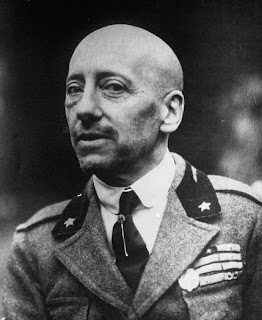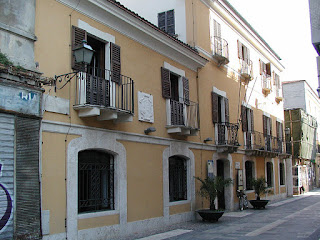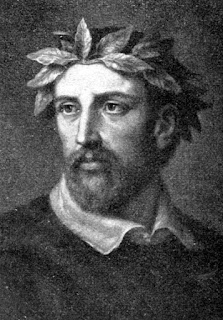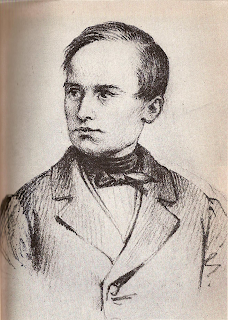Musician and writer once dubbed 'Italy's Springsteen'
 |
| Luciano Ligabue (Photo: Elena Torre CC BY-SA 2.0) |
Although popular in France, the singer-songwriter from Correggio, near Reggio Emilia, generally known as simply Ligabue, never managed to achieve true international recognition.
Yet such is his popularity in Italy that a Ligabue concert held on a stage erected on Reggio Emilia's airfield in 2005 attracted an audience of 180,000, a European record for a paid-for event headlined by a single artist.
The artist, who has also enjoyed success as a film director and a writer, has played before audiences of more than 110,000 at the Giuseppe Meazza football stadium in Milan -- the home of Internazionale and AC Milan -- and has twice repeated the so-called Campovolo event in Reggio Emilia.
Watch a video clip of Ligabue's popular song 'Certe Notti'
A concert there in 2011, limited for security reasons to 110,000, was a sell-out, and a third concert, staged in September last year to celebrate Ligabue's 25 years in the music business, sold 150,000 tickets, setting another record as the most lucrative single music concert in Italian history, with proceeds of around €7 million.
Although he grew up with a love of music, it was some years before Ligabue was able to make a living from his passion. As a young man, he flitted from one job to another. At different times he worked in agriculture and the steel industry, hosted a radio show, kept a shop and was a trainee accountant, but never saw himself settling for a career in anything but music.
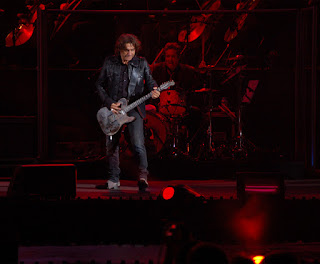 |
| Ligabue performing at a concert at the Arena di Verona in September 2008 (Photo: Lo Scaligero CC BY-SA 3.0) |
The most recent album, Giro del Mondo, was released in 2015, bringing his total so far to 18. His most famous songs include Balliamo sul mondo (Let's Dance on the World), Ho Perso le Parole (I've Lost the Words) and the most successful of all, Certe Notti (Certain Nights), which was voted as "Italian song of the 1990s" by the readers of a popular music magazine.
He displayed his versatility as an artist by venturing into cinema in 1998. His first movie, Radiofreccia, a semi-autobiographical story of a local radio station, was well received by the critics and won a number of awards. Ligabue also composed the soundtrack, which was released as an album.
Ligabue's short story collection, Fuori e Dentro il Borgo (Outside and Inside the Village) also won awards, and he has written a science fiction novel La Neve se ne Frega (The Snow Doesn't Give a Damn) and a collections of poems Lettere d'Amore nel Frigo (Love Letters in the Fridge).
A new collection of short stories, Scusate il Disordine (Excuse the Mess), is due out in May.
He once had the reputation as Italy's equivalent of Bruce Springsteen, a musician interested in human rights and with strong political ideals. In the late 1990s he was elected to the communal council in his home town of Correggio, standing for the Italian Communist Party, although he is no longer actively involved in politics. In 1999, he joined with fellow rock musicians Jovanotti and Piero Pelu in recording a protest song against the war in Kosovo.
 |
| The inner courtyard of the Palazzo dei Principi in Correggio (Photo: Paolo Picciati CC BY-SA 3.0) |
The town of Correggio, situated a little over 20km to the north-east of Reggio Emilia, has its origins in the Middle Ages. It began to grow in the 11th century, when a castle was built and later, within its walls, the impressive Palazzo dei Principi. Controlled by the same feudal family for 600 years, it fell into the hands of the Dukes of Modena and many new buildings in neoclassical style were built during the 18th and 19th centuries. Some beautiful palaces and churches can be seen in Corso Mazzini and Piazza Quirino, one example being the Collegiate Church of Saints Michael and Quirino. Correggio was also home to the Renaissance artist Antonio Allegri (1489-1534), widely known as Correggio. There is a monument dedicated to him in Piazza Quirino.
Correggio hotels by Booking.com
Travel tip:
The city of Reggio Emilia is reckoned to be the home of Italy's world famous hard cheese, Parmigiano Reggiano, which is thought to have originated in the commune of Bibbiano, in the Reggio Emilia province. It is also credited with being the area of Italy from which the country adopted the tricolore as the national flag, with evidence that a short-lived 18th century republic, the Repubblica Cispadana, had a flag of red, white and green. There are a number of notable buildings, including the Basilica della Ghiara and the 10th century Basilica di San Prospero.
 |
| Wheels of Parmigiano Reggiano cheese, which is thought to originate in Reggio Emilia |
The city of Reggio Emilia is reckoned to be the home of Italy's world famous hard cheese, Parmigiano Reggiano, which is thought to have originated in the commune of Bibbiano, in the Reggio Emilia province. It is also credited with being the area of Italy from which the country adopted the tricolore as the national flag, with evidence that a short-lived 18th century republic, the Repubblica Cispadana, had a flag of red, white and green. There are a number of notable buildings, including the Basilica della Ghiara and the 10th century Basilica di San Prospero.
